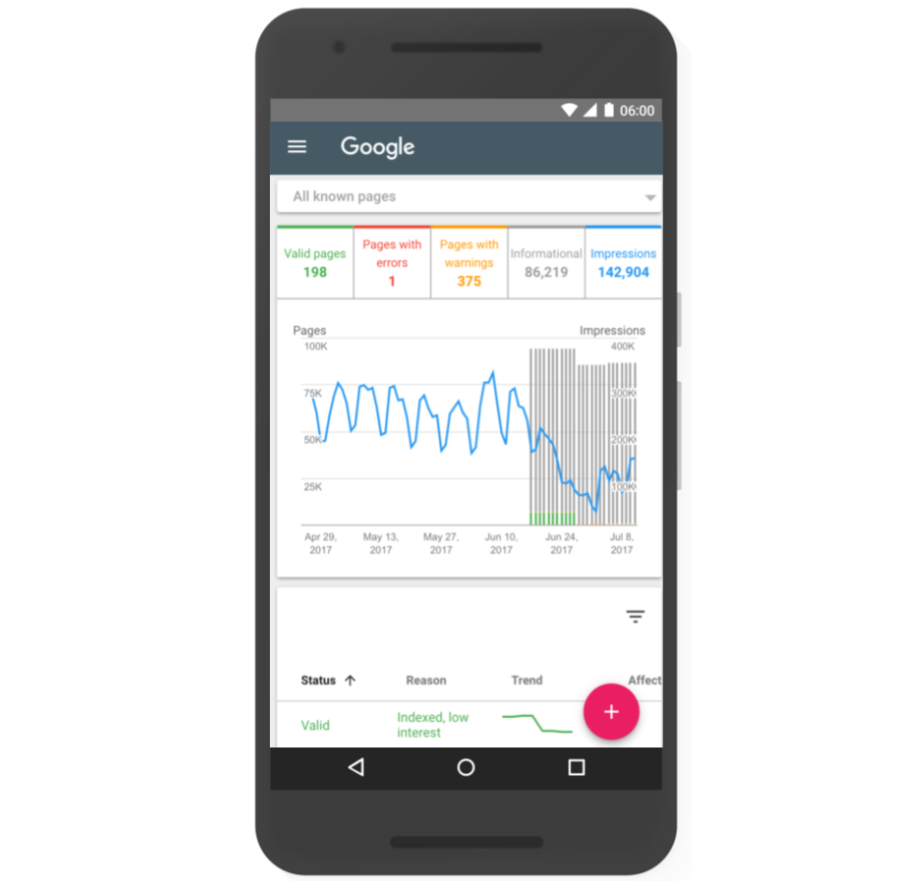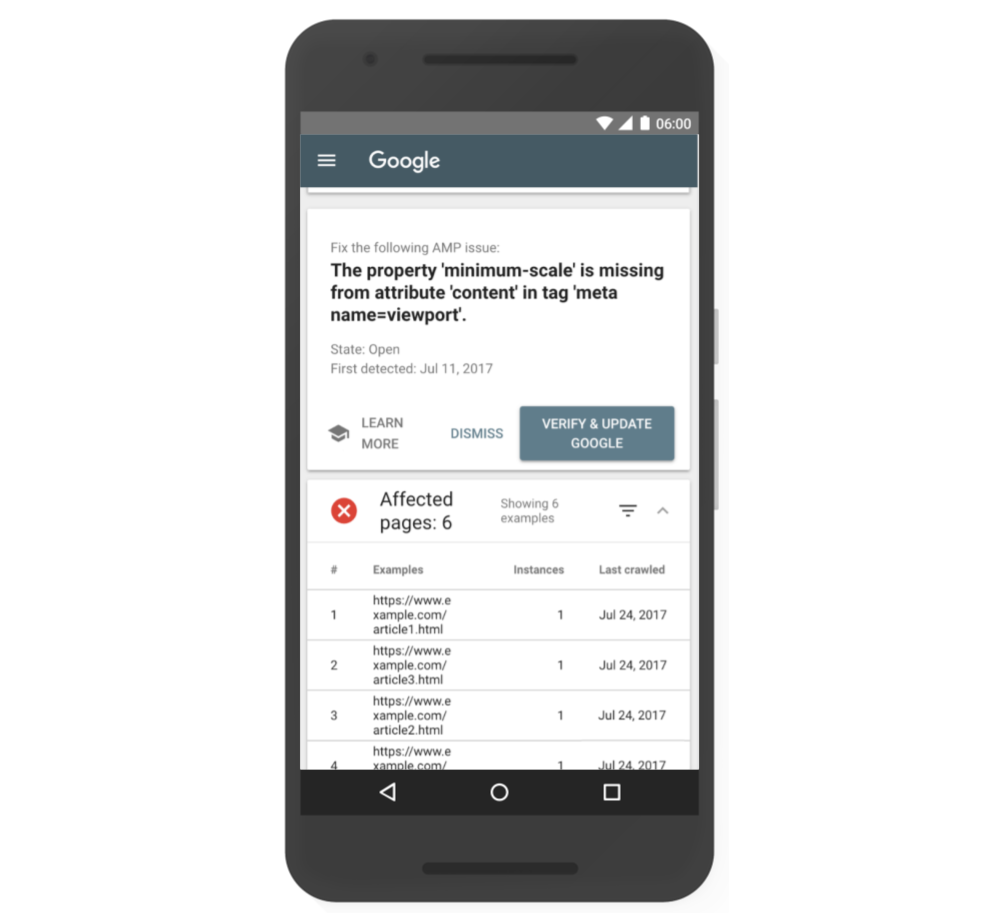Google Search Console has long been a go-to platform for SEOs on a daily basis.
It provides invaluable insight into how people are finding our websites, but also allows us to monitor and resolve any issues Google is having in accessing our content.
Originally known as Google Webmaster Tools, Search Console has benefited from some significant upgrades over the past decade. That said, it is still far from perfect and few would argue that it provides a complete package in its current guise. A raft of industry updates, particularly those affecting mobile rankings, has left Search Console’s list of features in need of an overhaul.
Therefore, Google’s recent announcement of some ongoing and upcoming changes to the platform was very warmly received by the SEO community. These changes go beyond the cosmetic and should help site owners both identify and rectify issues that are affecting their performance. There have also been some tantalizing glimpses of exciting features that may debut before the end of the year.
So, what has changed?
Google categorizes the initial Search Console changes into the following groups: Insights, Workflow, and Feedback Loops.
Within the Insights category, Google’s new feature aims to identify common “root-cause” issues that are hampering the crawling and indexation of pages on a website. These will then be consolidated into tasks, allowing users to monitor progress and see whether any fixes they submit have been recognized by Google.
This should be hugely beneficial for site owners and developers as it will accelerate their progress in fixing the big ticket items in the platform.
On a broader level, this is in line with Google’s drive to use machine learning technologies to automate some laborious tasks and streamline the amount of time people need to spend to get the most out of their products.
The second area of development is Organizational Workflow which, although not the most glamorous part of an SEO’s work, should bring some benefits that make all of our lives a little easier.
As part of the Search Console update, users will now be able to share ticket items with various team members within the platform. Given how many people are typically involved in identifying and rectifying technical SEO issues, often based in different teams or even territories, this change should have a direct and positive impact on SEO work streams.
Historically, these workflows have existed in other software packages in parallel to what occurs directly within Search Console, so bringing everything within the platform is a logical progression.
The third announcement pertains to Feedback Loops and aims to tackle a longstanding frustration with Search Console. It can be difficult to get everyone on board with making technical fixes, but the time lag we experience in verifying whether the change was effective makes this all the more difficult. If the change does not work, it takes days to realize this and we have to go back to the drawing board.
This lag is caused by the fact that Google has historically needed to re-crawl a site before any updates to the source code are taken into account. Though this will remain true in terms of affecting performance, site owners will at least be able to see an instant preview of whether their changes will work or not.
Feedback is also provided on the proposed code changes, so developers can iterate very quickly and adjust the details until the issue is resolved.
All of the above upgrades will help bring SEO to the center of business discussions and allow teams to work together quickly to improve organic search performance.
In addition to these confirmed changes, Google has also announced some interesting BETA features that will be rolled out to a wider audience if they are received positively.
New BETA features
Google has announced two features that will be tested within a small set of users: Index Coverage report and AMP fixing flow.
The screenshot below shows how the Index Coverage report will look and demonstrates Google’s dedication to providing a more intuitive interface in Search Console.
As Google summarized in their announcement of this new report:
“The new Index Coverage report shows the count of indexed pages, information about why some pages could not be indexed, along with example pages and tips on how to fix indexing issues. It also enables a simple sitemap submission flow, and the capability to filter all Index Coverage data to any of the submitted sitemaps.”
Once more, we see the objective of going beyond simply displaying information to go to a deeper level and explain why these issues occur. The final, most challenging step, is to automate the prescription of advice to resolve the issues.
Other platforms have stepped into this arena in the past, with mixed success. SEO is dependent on so many other contingent factors that hard and fast rules tend not to be applicable in most circumstances. Automated advice can therefore either be too vague to be of any direct use, or it can provide specific advice that is inapplicable to the site in question.
Technical SEO is more receptive to black and white rules than other industry disciplines, however, so there is cause for optimism with this new Google update.
The second BETA feature is the AMP fixing flow. AMP (Accelerated Mobile Pages) is Google’s open source initiative to improve mobile page loading speeds by using a stripped-back version of HTML code.
With the weight of one of the world’s biggest companies behind it, AMP has taken hold with an increasing number of industries and looks set to widen its reach soon within both ecommerce and news publishers.
Google has bet on AMP to see off threats from the likes of Facebook and Snapchat, so it stands to reason that they want to help webmasters get the most out of its features. Any new coding initiative will bring with it a new set of challenges too, and some developers will find a few kinks as they translate their content to AMP HTML.
The AMP fixing flow will look similar to the screenshot below and will allow users to identify and tackle any anomalies in their code, before receiving instant verification from Google on whether the proposed fix is sufficient.
What’s next?
The one aspect of Search Console that all marketers would love to see upgraded is the lag in data processing time. As it stands, the data is typically 48 hours behind, leading to some agonizing waits as marketers hope to analyze performance on a search query level. Compared to the real-time data in many other platforms, including Google Analytics and AdWords, Search Console requires two days to source and process its data from a variety of sources.
That may change someday, however. As reported on SE Roundtable, Google’s John Mueller has stated that they are investigating ways to speed up the data processing. Although Mueller added, “Across the board, we probably at least have a one-day delay in there to make sure that we can process all of the data on time”, this still hints at a very positive development for SEO.
With so many changes focused on speed and efficiency, a significant decrease in the data lag time on Search Console would cap this round of upgrades off very nicely.
source https://searchenginewatch.com/2017/09/05/google-search-console-what-the-latest-updates-mean-for-marketers/




No comments:
Post a Comment